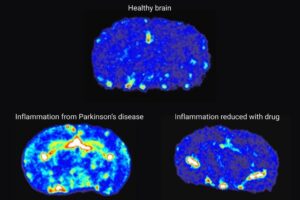
In today’s fast-paced world, where constant digital stimulation is the norm, our brains are increasingly overwhelmed. With 24/7 access to news, emails, and social media, many individuals find themselves in a cycle of endless scrolling, seeking quick bursts of dopamine. This behavior contributes to heightened stress levels, prompting a call for mental breaks. Research supports the idea that allowing our minds to drift without focused attention can significantly reduce stress and enhance cognitive function.
The concept of attention restoration theory (ART) offers a framework for understanding how to effectively give our brains a much-needed respite. Proposed by psychologists Rachel Kaplan and Stephen Kaplan in 1989, ART suggests that disengaging from directed attention—where one is actively focused on specific tasks—can lead to improved mental clarity and emotional well-being.
Understanding Attention Restoration Theory
Directed attention involves deliberate concentration on tasks such as studying, navigating busy environments, or engaging on social media. In contrast, undirected attention allows the mind to wander freely, capturing thoughts without intentional focus. This could be as simple as listening to birds chirping or watching leaves sway in the wind.
Without regular opportunities for undirected attention, the brain can suffer from “attentional fatigue,” leading to diminished focus and increased susceptibility to distractions. Historically, moments of boredom—like waiting for transportation or standing in a queue—provided natural pauses for our minds to reset. In contrast, modern smartphones create an environment of constant entertainment, leaving little room for mental recovery.
Research supports the Kaplans’ theory, tracing its roots back to the 19th century with psychologist William James. He introduced the notion of “voluntary attention,” requiring effort and concentration, in an era deeply influenced by Romanticism’s appreciation of nature. Subsequent studies have confirmed the restorative effects of nature, linking time spent outdoors with lower stress levels and improved cognitive function.
The Neuroscience Behind Nature’s Benefits
Neuroscience has provided compelling evidence for ART. Neuroimaging studies show that activity in the amygdala, a region of the brain associated with stress, decreases when individuals are exposed to natural environments. Conversely, urban settings fail to elicit the same calming response.
A systematic review of 42 studies found significant associations between exposure to natural environments and various aspects of cognitive performance, including attention. One randomized controlled trial revealed that participants who took a 40-minute walk in a natural setting experienced lower stress levels compared to those walking in urban areas. This suggests that nature walks facilitate attention restoration.
Remarkably, even brief periods of undirected attention—just ten minutes—can yield measurable improvements in cognitive test performance and reduce attentional fatigue. Activities like walking on a treadmill while observing nature scenes can also stimulate cognitive benefits.
For those looking to apply attention restoration theory in their daily lives, finding green spaces is essential. Whether it’s a nearby park, riverside, or forest trail, these environments foster undirected attention. To maximize benefits, individuals should minimize distractions, such as smartphones. Instead of reaching for a device during dull moments, they can use these opportunities to let their minds wander.
Every person may respond differently to various settings. If trying to practice ART leads to intrusive thoughts about structured tasks, it may indicate a need for a more conducive environment where mental disengagement is easier. Observing a ladybird or spending time in nature can help restore cognitive balance.
As Anna Kenyon, Senior Lecturer in Population Health at the University of Lancashire, states, “It’s not laziness; it’s neurological maintenance.” Engaging with the world around us without a specific agenda can provide vital mental restoration, ultimately enhancing our overall well-being.
This article is republished from The Conversation under a Creative Commons license. Read the original article for further insights.






